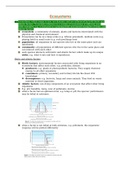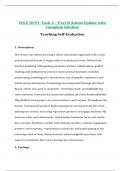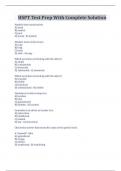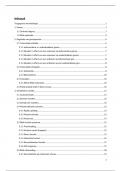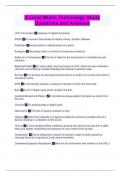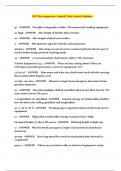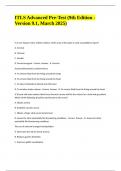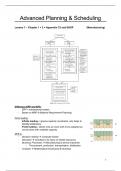ecosystems, which range in size, are dynamic and are influenced by both biotic and
abiotic factors. To include reference to a variety of ecosystems of different sizes
(with examples, e.g. a rock pool or a playing field) and named examples of biotic and
abiotic factors.
ecosystem: a community of animals, plants and bacteria interrelated with the
physical and chemical environment
Ecosystems can be on a large scale (e.g. African grassland), medium scale (e.g.
playing field) or small scale (e.g. rock pool/large tree)
population: all organisms in one species who live in the same place and can
interbreed.
community: all populations of different species who live in the same place and
can interact with each other.
each species interacts with biotic and abiotic factors which make up its unique
niche, e.g. what it eats and how it reproduces.
Biotic and abiotic factors
Biotic factors: environmental factors associated with living organisms in an
ecosystem that affect each other, e.g. predation, disease.
producers: e.g. plants & photosynthetic bacteria. They supply chemical
energy to all other organisms
consumers: primary, secondary and tertiary bla bla bla (basic KS2
knowledge)
decomposers: e.g. bacteria, fungi and some animals. They feed on waste
material or dead organisms.
Abiotic factors: non-living components of an ecosystem that affect other living
organisms.
E.g. pH, humidity, temp, conc of pollutants, storms
when a factor has an optimum level, e.g. temp or pH, the species’ performance
may be lethal at extremes:
when a factor is not lethal at both extremes, e.g. pollutants, the organisms’
response will be plotted differently:
, Ecosystems are dynamic – they change!
non-living factors change, and living factors grow and die.
3 types of changes in ecosystems affect population size:
o cyclic changes: e.g. movement of tides and changes in day length. The way
in which predator and prey species fluctuate will be cyclic.
o directional changes: go in one direction, often lasting longer than the
organisms’ lifetimes. E.g. erosion of coastline. This will cause certain
variables to continually increase/decrease.
o erratic changes: no rhythm or direction, e.g. hurricanes.
organisms will react to these changes, e.g. small mammals hibernate in winter.
biomass transfers through ecosystems.
materials are recycled in an ecosystem, while energy flows through an
ecosystem.
trophic level: the level at which an organism feeds in a food chain
At each trophic level, some biomass is lost via life processes.
o respiration releases energy (some of this is eventually converted to heat)
o materials are lost in CO2 and water
o biomass is lost in indigestible components like bones and hair
o biomass is lost in waste material or dead organisms which is only
available to decomposers
Biomass therefore decreases going up the trophic levels.
If organisms in a food chain are roughly similar sizes, here will be fewer
consumers at higher levels. (https://www.youtube.com/watch?v=D3rLp7w1cxQ) Ecologists
show this in a pyramid of numbers.
The area of each bar is proportional to the
number of organisms (as an
approximation for the biomass at that level). The pyramids can be drawn for a
single food chain or an ecosystem as a whole.
To include how biomass transfers between trophic levels can be measured AND the
efficiency of biomass transfers between trophic levels.
counting the number of organisms doesn’t always provide an accurate picture of
how much biomass exists at each trophic level.
Instead, a pyramid of biomass should be drawn, where the area of each bar is
proportional to the dry mass of all the organisms at that trophic level. An
ecologist achieves this by putting all organisms into an oven at 80°C. The mass is
checked at regular intervals and once it stops decreasing, it means that all their water has
evaporated.
Since this is destructive to the ecosystem, ecologists usually measure the wet mass and
calculate dry mass from previous data.
To calculate efficiency of biomass transfer between ecosystems, we can use
either of the following:

